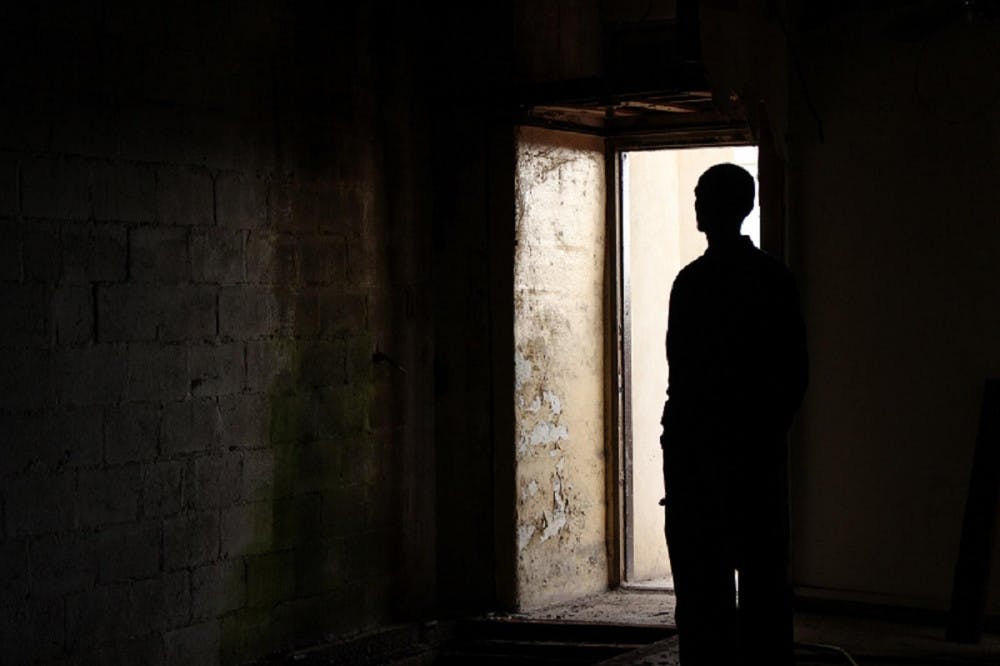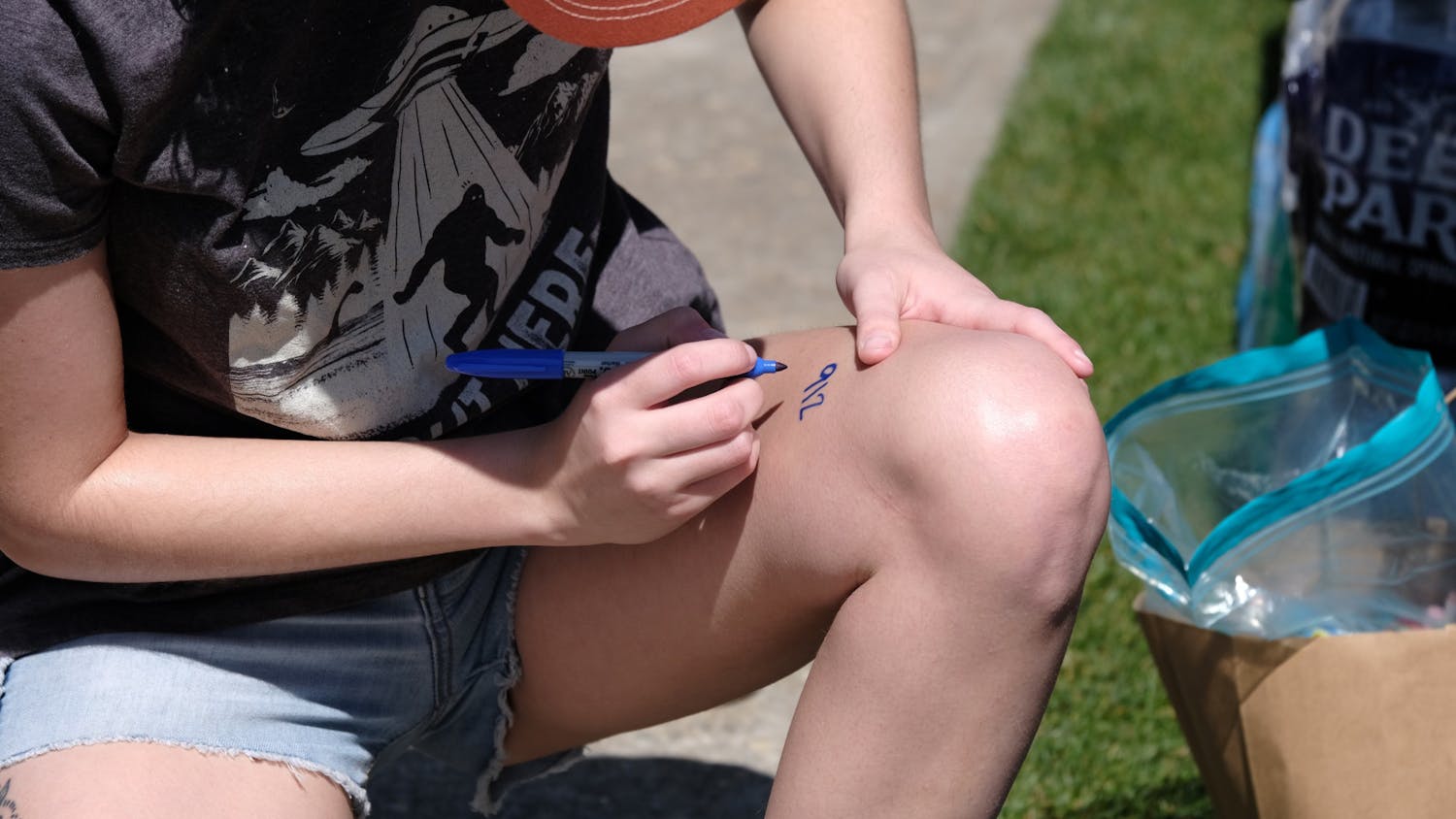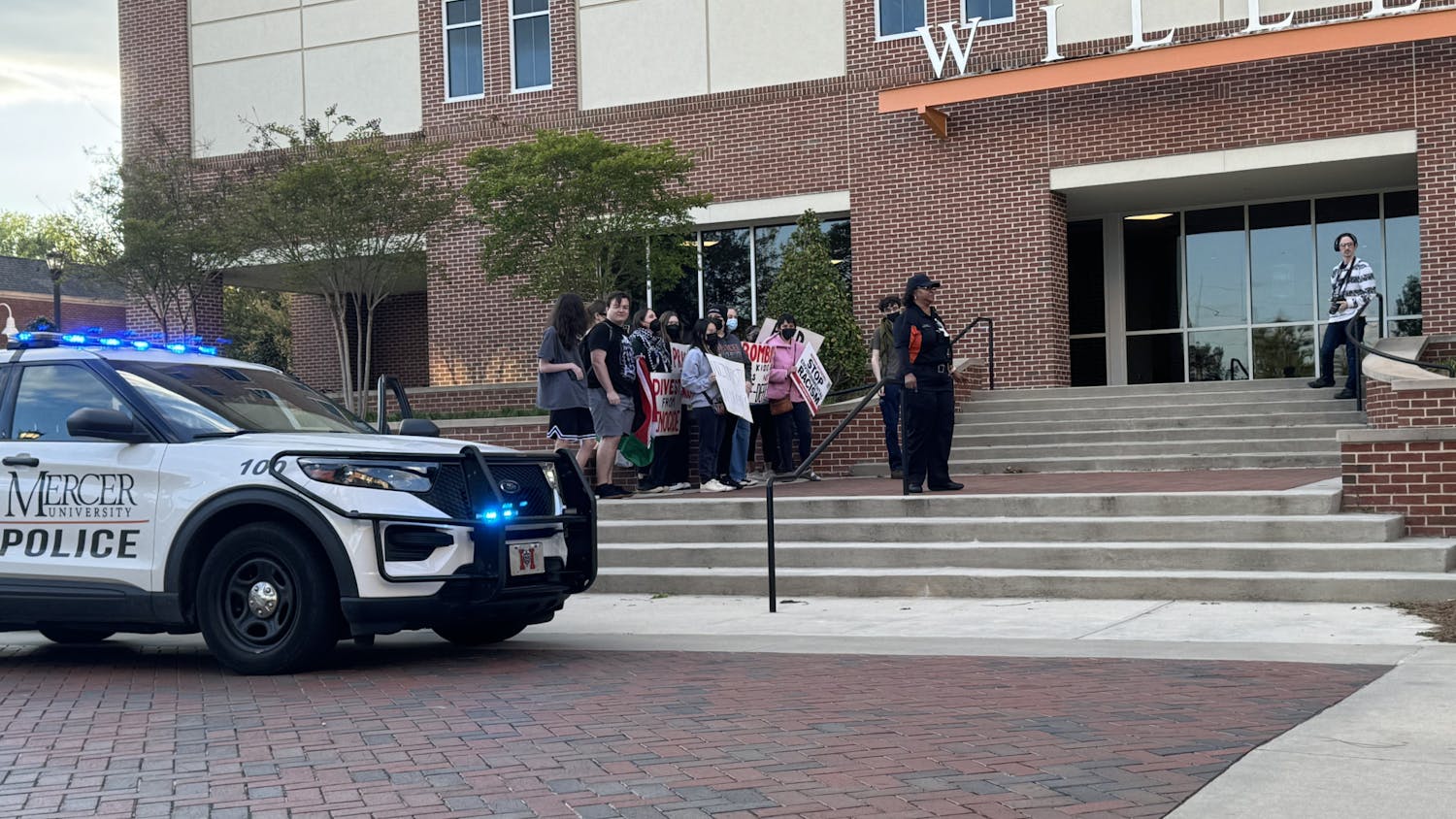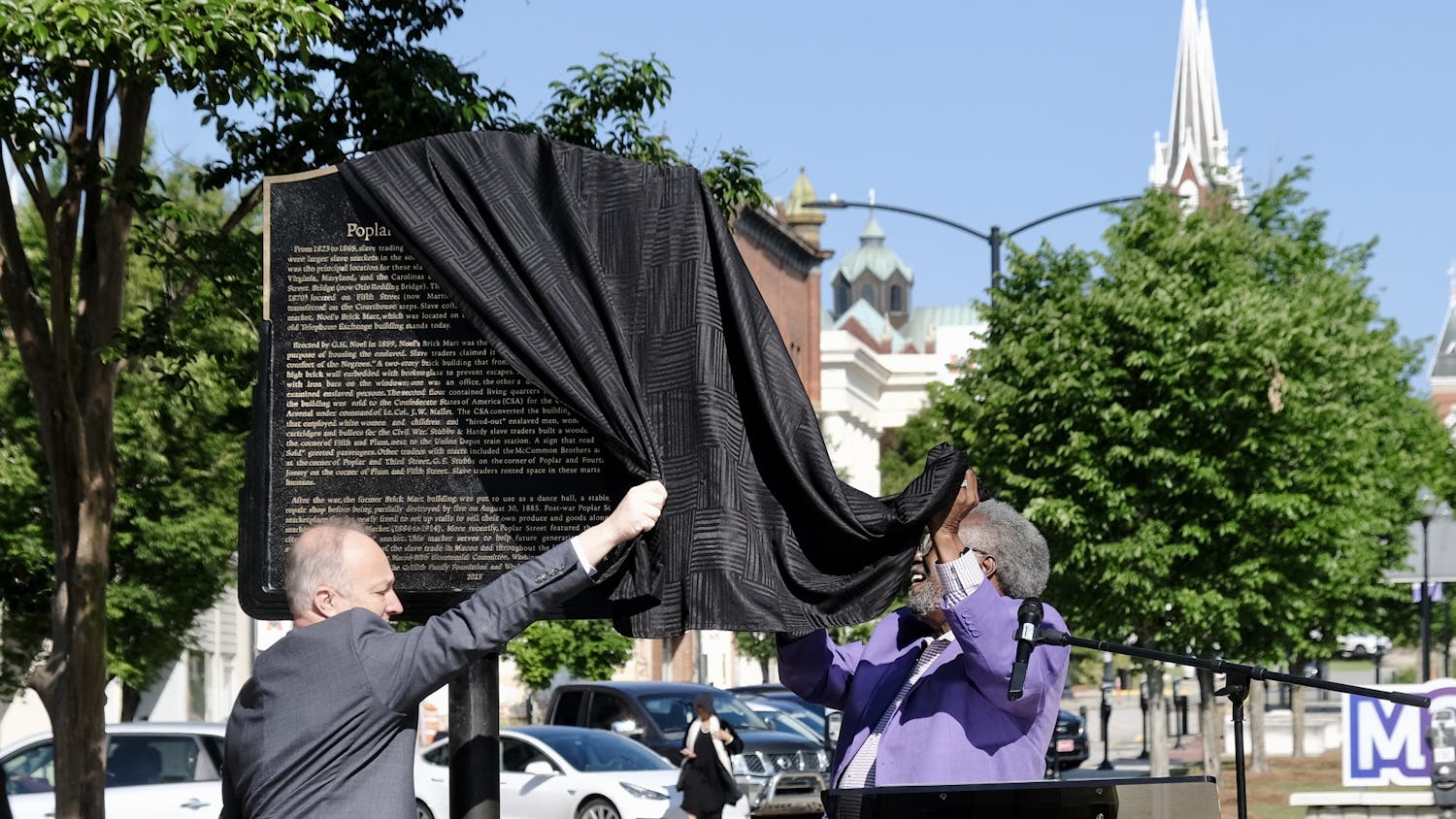Among the vanities housed at Bryan Nichols’ storage building sits stacks of someone else’s treasure. There are ticket stubs from every Allman Brothers Band concert in 1974-1975, photographs of artist Andy Warhol and newspapers that chronicle the rise of the presidential peanut farmer Jimmy Carter.
The story of Capricorn Records — and southern rock — lives in the boxes and bins Nichols’ team lifted from the former Capricorn office space. Nichols hopes Mercer University will soon house them.
'I BETTER JUST TAKE THIS BOX.'
Nichols said he never expected to find documents. The real estate developer purchased the former Capricorn office space sometime around January 2015 from the Ocmulgee Land Trust. He originally planned to renovate the property and preserve as much of the original building as possible. It wasn’t his first attempt at a renovation project. He had done the same with the Taste and See coffee shop and various residential units downtown.
Nichols had owned the property a “month or so” before he began finding things. The first thing uncovered was a box that he initially thought was trash.
When he brought members of Historic Macon to tour the property, he thumbed through the contents of the box and found but trash.
“The next thing you know, I’m finding some more stuff, and I’m like ‘I better just take this box.’ I left there immediately and brought it and just spread it all over the place. I was going ‘Holy Cow! There’s stickers that you put on your car to get into the White House.’”
He kept sifting and found handwritten letters from First Lady Rosalynn Carter to Phil Walden, co-founder of Capricorn Records, thanking him for all of his help. After that, Nichols said he knew he had something.

'BOX AFTER BOX AFTER BOX.'
When Nichols was making his first walk-through, the building was in terrible shape. It hadn’t been occupied since Capricorn Records auctioned off the property after filing for bankruptcy.
But during the late 60s and into the late 70s, the building was home to music dynasties. Before the Waldens embraced southern rock, RedWal Records, which became Capricorn, owned the property.
While president of the Phi Delta Theta fraternity at Mercer, Phil Walden began booking R&B artists for fraternity shows.
Eventually, Phil and his brother Alan formed a booking agency and developed a relationship with “The Big O” Otis Redding. They originally rented property on Mulberry Street before they purchased the former chicken processing plant on Cotton Avenue.
Nichols said he was told by Alan and others that they had to sweep out chicken heads after purchasing the building that would house RedWal.
Although Nichols said this fact seemed strange, he began to believe the plausibility when tearing back the drywall revealed tiled walls.
“It’d be easier for them to clean,” he said. “Once they slaughtered the chickens, they could just wash down everything.”
The building served as office space for the Waldens who worked with Redding and other R&B/Soul artists, such as Sam and Dave, Percy Sledge and Al Green.
The company changed direction after Redding’s untimely death in 1969. The Waldens built their new company around a long-haired Muscle Shoals session guitarist by the name of Duane Allman. Frank Fenter joined the Waldens, and the newly formed Allman Brothers Band became the face of Capricorn Records.
The label became so influential that then Georgia governor Jimmy Carter announced his presidential bid at a Capricorn picnic. The Allman Brothers played benefits, and Walden threw his music industry muscle behind Carter; and the dark horse candidate found himself being sworn in as the nation’s 39th president. Southern rock hit its zenith.
But that was long ago. Today, inside the water-damaged building in Macon’s historic African-American business district sits the relics.
Nichols said he knew some of the history. Now, he wanted to put together all the individual pieces. When he found the first box, the hunt for the rest was on. But it wasn’t going to be easy. A slow water leak had contributed to the building’s deterioration.
As he explored, Nichols learned the property was actually two separate buildings that shared one facade after a 1975 remodel. He started with the first building.
“The stairs in that building had collapsed, and there were some old records. But they had been crushed,” Nichols said. “So, we went through that with a fine tooth comb only to find that under that there was a bookshelf that had a bunch of stuff on it and in there we found a few things. I thought that was going to be it.”
Nichols employed a bold strategy when searching the second building because parts of the second floor had caved and crumbled.
“We cut a hole in the Sheetrock ‘cause you couldn’t get up there, and I kind of stuck my head onto the second floor, and there was just box after box after box,” he said.
It was similar to some of the stuff he found in the first box. The newspapers, magazines and ticket stubs poured in. Nichols even found the famous Mountain Dew can that sat in the window.
Nichols said he knew he had a lot of work to do.
‘WELL, WHAT’S A GOLD MINE?’
Aside from some of the filing boxes that survived all those years, Nichols and his crew began to haul away the memorabilia.
“We brought it out in every kind of thing you could think of: tubs, boxes, whatever we could find to put it in,” Nichols said.
He wasn’t sure how to organize or store it all.
“The elevator [in his personal storage building] is actually full of a bunch of [filing boxes] that I took the files out of and threw them away because they we falling apart and disintegrating. I didn’t want to pick them up again.”
At first, Nichols sifted through all the documents and tried to locate band members or the authors of fan letters via Google or Facebook. But Nichols — who is also the co-owner of Taste and See, a board member of NewTown Macon, facilities director and technical director at Christ Chapel Church, and a drummer — doesn’t have the time.
He not only had the building to fix but also “nearly 50 medium sized boxes” full of Capricorn Records memorabilia to hold onto, and others wanted to get involved.
Nichols began getting calls from people wanting to help him with the rebuild. Others kept telling him he was “sitting on a gold mine.” But Nichols doesn’t see it that way.
“Well, what’s a gold mine? Is a gold mine $100? Is a gold mine $10,000? Is a gold mine $1 million? This stuff is not worth that much money, but it’s a lot of history. History is worth something, but it’s not worth a gold mine like people think,” Nichols said.
Nichols said there are two items, however, that might be worth some money: the tickets from every Allman Brothers Band concert in 1974-1975 and the Andy Warhol picture.
“If I called Andy Warhol and he had never seen the pictureand he was really good friends with Phil [Walden] and just absolutely had to have that picture, and then I was a greedy SOB who thought well I’m gonna get rich off this,” he said. “But you know what I’d probably do? I’d probably say ‘Dude, this picture belongs to you,’ and give it to him.”
Nichols keeps hearing suggestions to turn the property into “a museum or a music place.” He isn’t keen on that idea but is willing to do it if someone else who wants that rents the property. Citing the Big House Museum, which is also located in Macon, Nichols said he isn’t sure a Capricorn museum would be feasible.
“Museums have a hard time. They struggle. It’s just not something beneficial financially to put that much money into a museum that nobody comes and supports,” he said.
Nichols said he has reached out to Mercer University’s Special Collections and the Washington Library to house the material. Nichols said Mercer seems more feasible because he want to maintain his ownership.
Laura Botts, associate director for Mercer’s Special Collections, said in an e-mail that she hasn’t heard from Nichols but looks forward to future talks.
Mercer may be able to house the material “depending on the size of the collection,” Botts said.
Before finding out what will occupy the property or where the information will go, Nichols and company will have to rebuild.
‘WELL, THAT’S WHERE I’VE RUN INTO AN ISSUE.’
Nichols had to gut the property. There are beams, wires and severed air conditioning tubes hanging from the ceiling. The roof is gone, and recent rains have flooded the basement floor. The building is just bones.
The building process has stalled because Nichols isn’t sure what he wants to do with the building. Usually, he collects tax credits for his restoration projects. But the 1975 remodel makes the situation a little more complicated.
“Well, that’s where I’ve run into an issue,” Nichols said. “In order to get historic tax credits, the building must have historical significance. Usually, if the building is 50 years or older, it automatically qualifies. That building is not 50 years or older now.”
Nichols is fighting the state and federal government for recognition to get the tax credits. He said government officials have tentatively agreed that if he returns the building to the exact way it was before it collapsed, the building would be on the Georgia’s historic places list but not the National Register.
But if he puts it back exactly the way it was, it limits what Nichols can do with the building.
“Back in those days, they had a mail room. They had secretaries. They actually had a black room in there . . . because everything had to be done in house,” Nichols said. “Now, everybody does things off of e-mail. People’s offices are their cell phones.”
Nichols said other potential uses include a restaurant or lofts like he’s doing in the buildings next door at the Melba Lodge. But nothing is certain.
“We’re still in that debating stage,” Nichols said.
As of now, Nichols just has the pieces.

Capricorn office space restoration at crossroads

Bryan Nichols stands inside the Capricorn office space at 535 DT Walton Sr Way. Nichols purchased the property and looking to rebuild it into office space or lofts.




